Home » Posts » Urban Field Trip Reflection
13 October 2023Urban Field Trip Reflection
by Yucheng Zhang
“It can be ironic, even embarrassing for a group of planning students to be stuck at the hostel due to a flash flood right after visiting multiple Climate Resiliency sites.”
Urban Field Trip in NYC: Public vs. Private Responses to Climate Changes
 Visiting Pier 15 the night before the storm.
Visiting Pier 15 the night before the storm.
The NYC field trip, hosted by Cornell University’s Planning Department, serves as a unique opportunity for students, many of whom have spent an extended period in the remote “urban” setting of Ithaca, to actively engage with planning practitioners, organizations, and their impactful projects. This year’s field trip focused on the topic of Climate Resiliency, with tours centered around various climate mitigation programs including the “Lower East Side Climate Resiliency Plan” and “Clean energy working waterfronts in Brooklyn”. This trip was an unforgettable experience, not only for seeing the implementation of climate mitigation and adaptation responses but also for the unplanned extreme weather events that flooded the whole city. It can be ironic, even embarrassing for a group of planning students to be stuck at the hostel due to a flash flood right after visiting multiple Climate Resiliency sites.
Coastal and Waterfront Protection
New York City is particularly vulnerable to climate issues like flooding and sea level rise due to its geographical location and the dense but unequal urban built environment. Geographically speaking, New York City is surrounded by the Atlantic Ocean coastline, which is subject to frequent hurricane hits and storm surges. The waterfronts in New York City, for example, those in Manhattan and Brooklyn, are largely considered low-lying lands that are considered “at-risk floodplains”.
As for the built environment in NYC, the aging infrastructures are starting to fail in their responsibilities, if not alreay exacerbating the climate crisis. The sewage systems and piers in NYC were not designed to handle the current population density or the changing climate, and are easily overwhelmed by extreme weather events. Many piers build with wood had degraded overtime and require additional maintenance and reconstruction funds. In terms of the built environment, once the rainwater runoff is unable to be discharged to the ocean or be absorbed by the ground (or, asphalt/concrete I would say), a flood occurs. In addition, these extreme weather events pose disproportionate challenges to disadvantaged populations. These groups, often compelled to reside in flood-prone zones without adequate mitigating infrastructures due to their financial constraints, find themselves more vulnerable to climate change and face more hardships to recover from the economic and health consequences.
To address the climate challenges, both the private and public sector have developed their climate adaptation strategies to mitigate the effects of extreme weather events. During our trip to NYC, we found interesting differences between the two sectors.
Public Intervention
Climate Interventions from the public sector are often categorized as long-term, costly, and equitable. In general, these projects often try to fit their design into the existing urban fabric through a holistic approach considering the economic, environmental, and social consequences. Climate intervention projects in the public sector often involve collaboration across multiple government agencies due to the complexity of securing permits and fitting into other schedules. Local communities are also involved in these projects to ensure the needs of residents are considered in the projects. This collaboration allows these projects to have a long-term vision that minimizes the unequal distribution of resources in the city. However, these collaborative and participatory processes also can lead to downfalls like inefficiency and funding challenges. Taking the East Side Coastal Resiliency (ESCR) Project as an example, the project aims to enhance the resilience and livability of East Side waterfront through the construction of a continuous waterfront park and storm management devices like flood gates and flood walls.
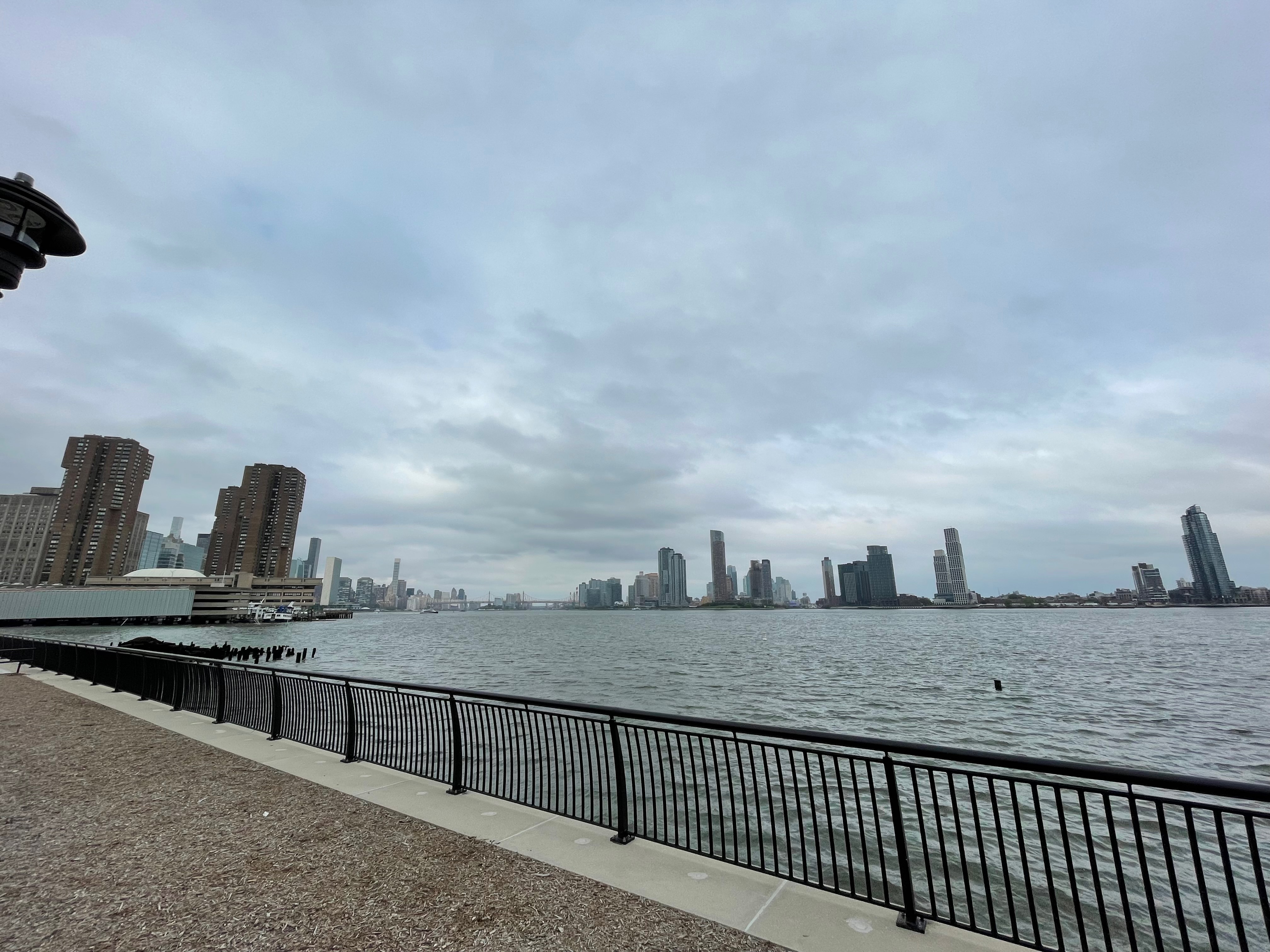 The waterfront park at Peter Cooper Village
The waterfront park at Peter Cooper Village
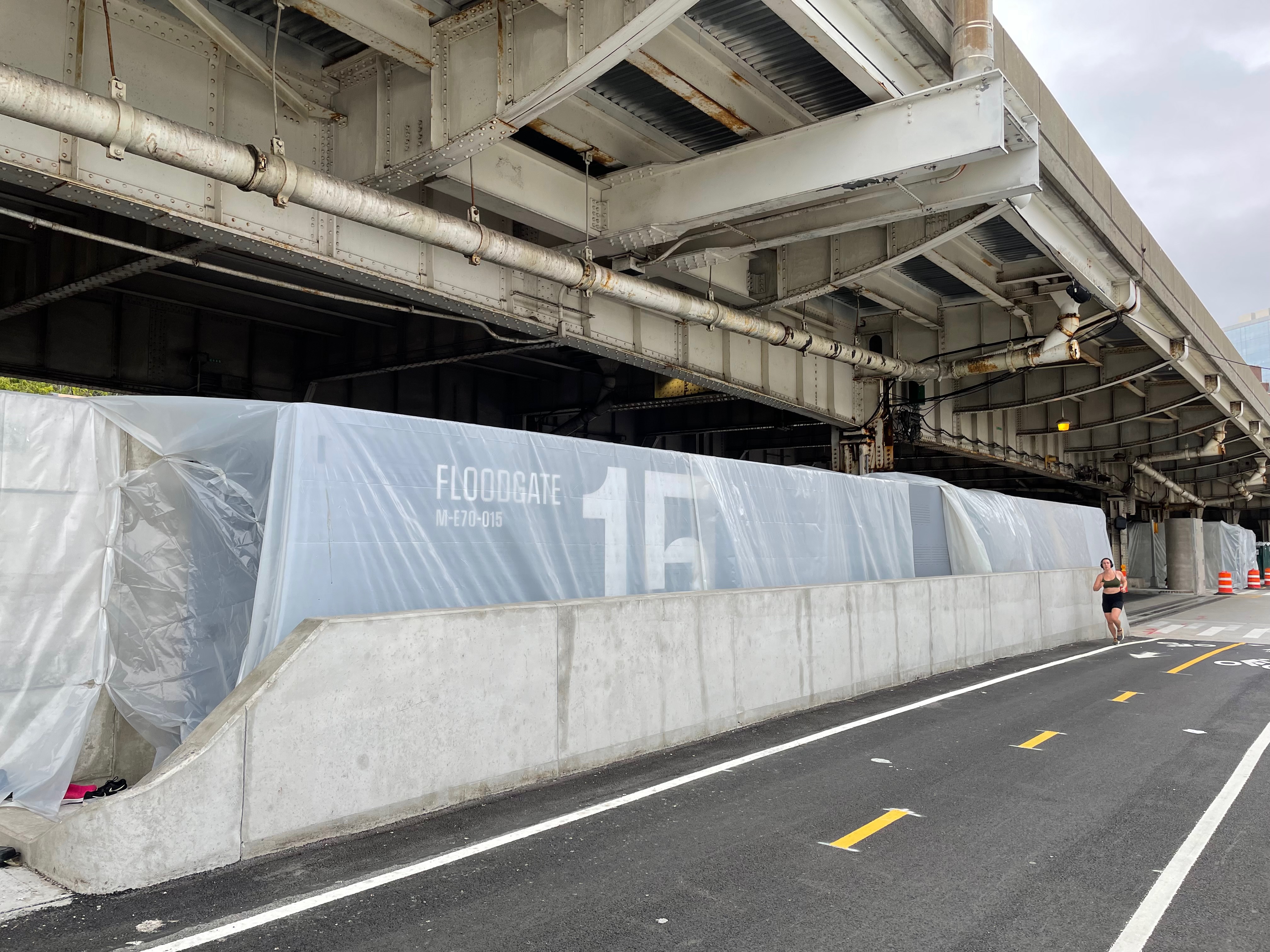 A finished flood gate, with residents running pass it
A finished flood gate, with residents running pass it
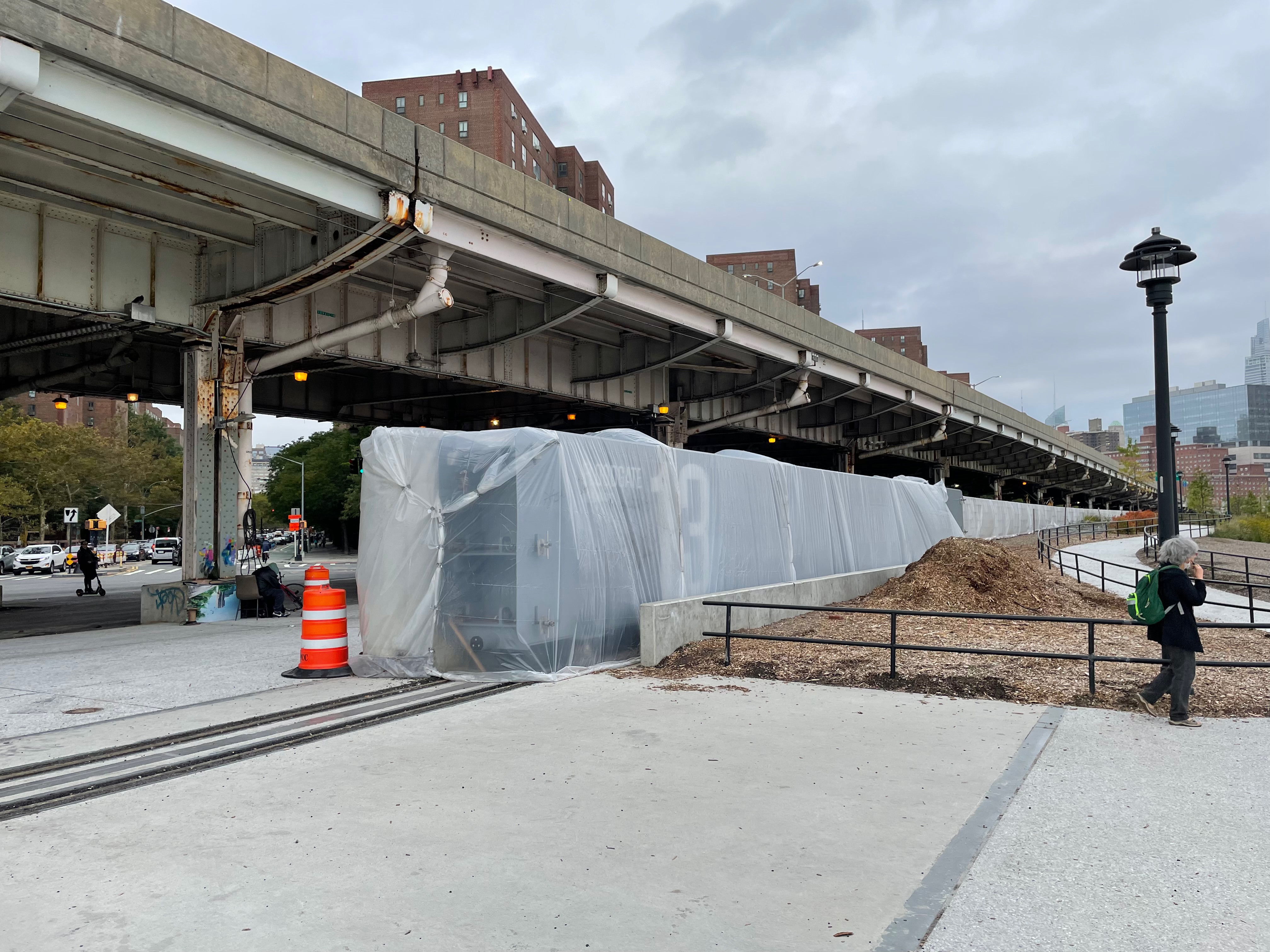 Another flood gate covered in plastic warps. I wonder if they were activated during the flash flood event the day
after this photo was taken.
Another flood gate covered in plastic warps. I wonder if they were activated during the flash flood event the day
after this photo was taken.
The above gate was reported installed on February 24, 2022. Together with other devices, the ESCR’s integrated flood protection system protects a span of 2.4 miles along the East Side of Manhattan and is anticipated to be finished in 2026 with a budget of $1.45 billion. I can’t help but contemplate the intricate bureaucratic processes, encompassing rigorous environmental evaluations, approval delays, and complex contracting procedures, which have seemingly contributed to the project’s slow construction pace. Given the limited and competing nature of government budgets, it naturally raises questions about the allocation’s equity. Are there potentially more equitable ways to deploy this substantial financial resource in competing projects that could more effectively help a broader and more vulnerable community?
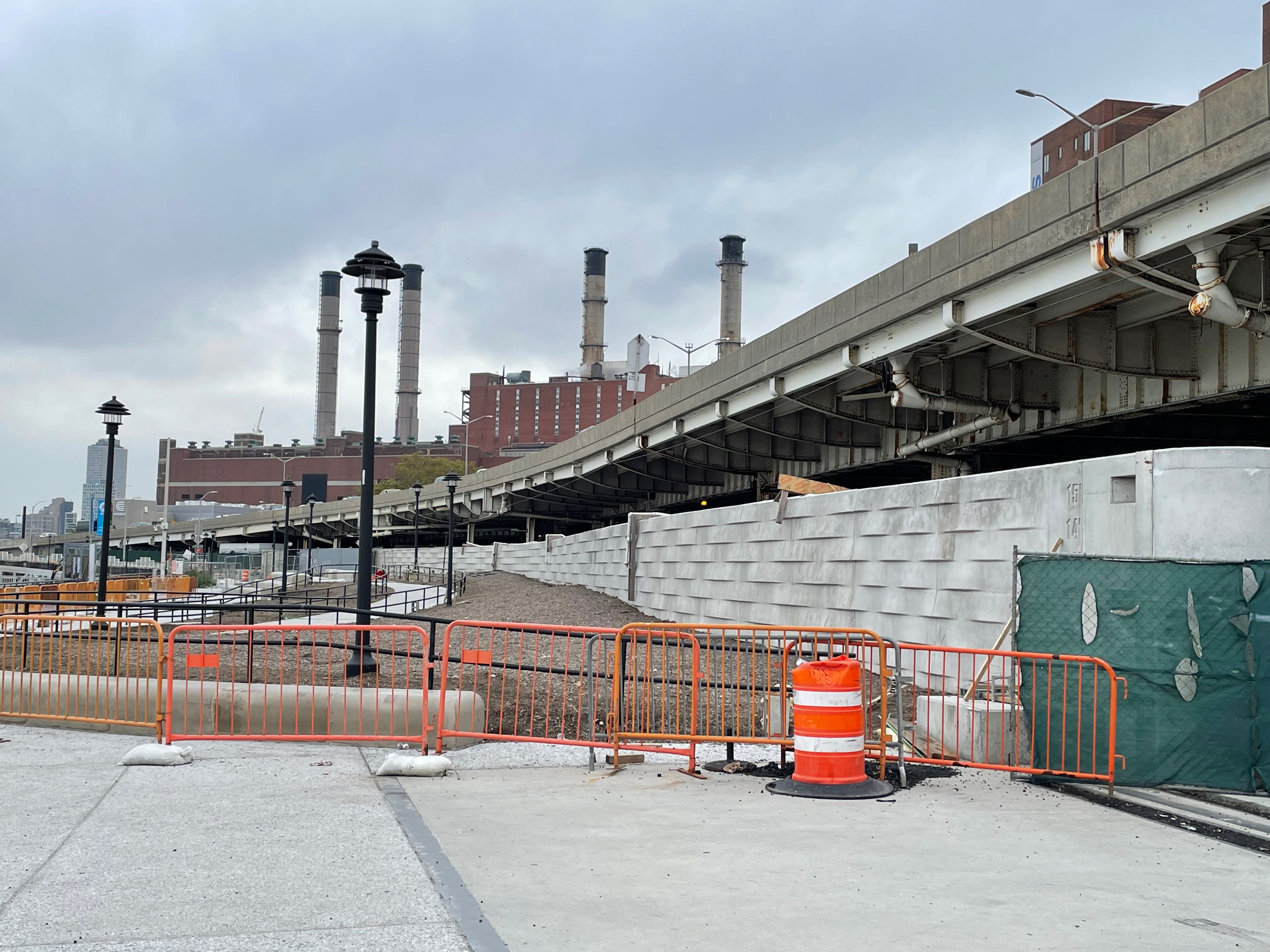 The flood wall, indeed aesthetically appealing, but lacked the possibility for future upgrades.
The flood wall, indeed aesthetically appealing, but lacked the possibility for future upgrades.
Despite their long-term vision, it often seems that public interventions fall short in their ability to swiftly address unforeseeable events. Take, for instance, the flood wall proposed back in the 2010s, designed to provide an 8-9 feet allowance above the existing grade. However, the latest stormwater level predictions have indicated a substantial rise, leaving the flood walls with only a mere 1-foot buffer. The situation is more concerning given the absence of plans for future remedies, such as enhancing the height of existing structures. As a consequence, the city may face substantial costs in its efforts to respond to the escalating frequency and intensity of climate challenges in the years ahead.
Private Intervention
We have also seen the installation of climate mitigation devices by the private sector, a realm traditionally categorized as public good and received underinvestment. However, in NYC, property owners find strong incentives to internalize the environmental costs. The motivation is rooted in the aspect of property value reservation and the long-term safeguarding of their reputation.
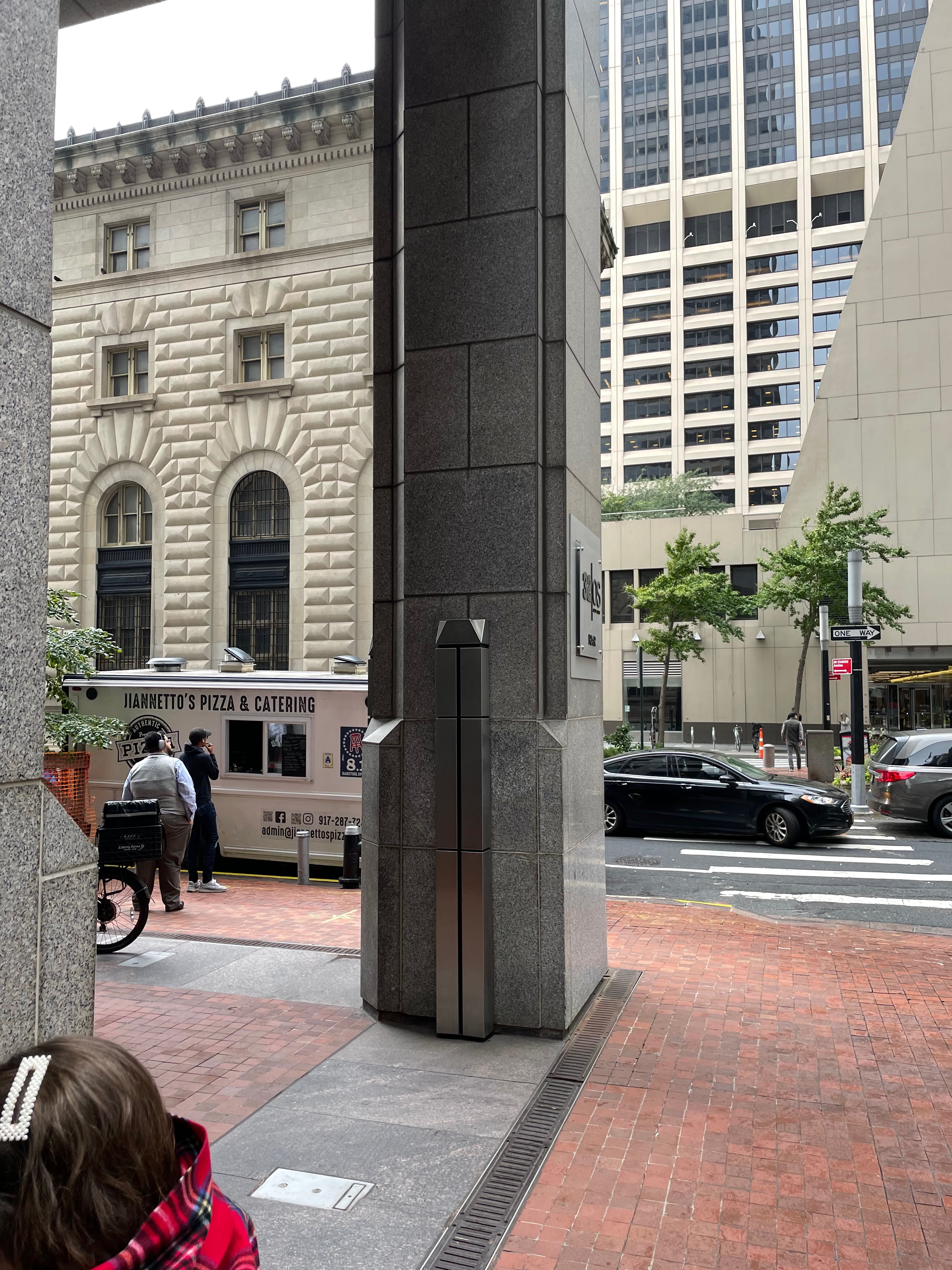 The socket for movable flood gates, hidden under the stainless-steel.
The socket for movable flood gates, hidden under the stainless-steel.
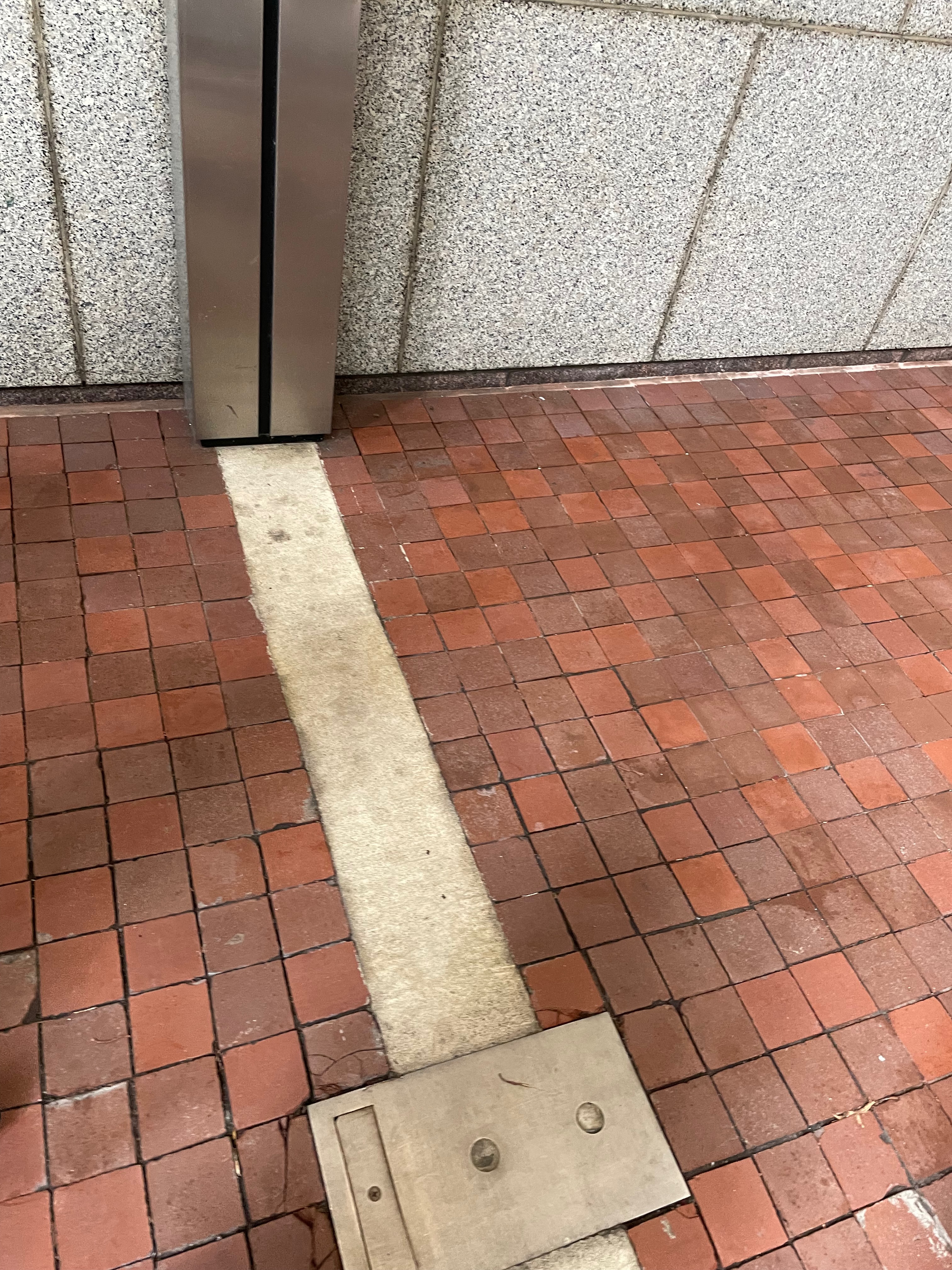 The location where the flood gates are placed.
The location where the flood gates are placed.
The aforementioned private floodgates are a great addition to large-scale public infrastructure projects due to their swiftness in deployment and adaptability to the local environment. The collaboration between public and private flood protection measures provides a more affordable and equitable solution to the changing climate.
At the end of the day…
It’s interesting to observe how residents have developed their unique approaches to dealing with climate events. To borrow a statement from my best friend Edward, “Nothing seems to surprise the people in NYC.” I believe the key is to maintain a positive attitude and perhaps take a moment to enjoy the simple pleasures, like catching a fish in the storm.
 Hooked a whopper!
Hooked a whopper!
